





Misidentification and Photo Lineups
By Colorado Criminal Defense Lawyer – H. Michael Steinberg
Introduction – The use of police lineups in Colorado to identify suspects is something we are all very familiar with from movies or on television. The truth is – we know since forensic DNA has become so much a part of our lives – how often misidentification occurs in our criminal courts.
We also know that eyewitness identifications play a substantial role in police procedure and the criminal justice system. Colorado state law governs the admissibility of such evidence in state criminal trials. This article addresses the laws that govern this admissibility or – the opposite – keeping such evidence out of court.
Due process of law comes into question when the police apply what the Supreme Court have called “suggestive” procedures that essentially indicate to the witness whom to identify as the suspect.
Photo Lineups In Colorado
Suggestive lineups are disapproved by the Colorado State Courts because they increase the likelihood of misidentification and have, in the past, too often brought about the conviction of the innocent. The United States Supreme Court has stated:
A major factor contributing to the high incidence of miscarriage of justice from mistaken identification has been the degree of suggestion inherent in the manner in which the prosecution presents the suspect to witnesses for pretrial identification….
Suggestion can be created intentionally or unintentionally in many subtle ways. And the dangers for the suspect are particularly grave when the witness’ opportunity for observation was insubstantial, and thus his susceptibility to suggestion the greatest.
The Supreme Court has noted that, once an eyewitness has chosen a suspect from a line-up, that witness is “not likely to go back on his word later on, so that in practice the issue of identity may (in the absence of other relevant evidence) for all practical purposes be determined there and the before the trial.”
The danger of misidentification is further increased in prosecutions where the victim is the witness, such as in a robbery, because there is a particular hazard that a victim’s understandable outrage may excite a vengeful or spiteful motive.
A Study Demonstrates The Issue
A recent study of forty cases in which the convicted persons were later exonerated through DNA testing revealed that ninety percent (90%) of the convictions were obtained, at least in part, by erroneous eyewitness identifications.
This study concluded that “mistaken eyewitness identification is responsible for more of these wrongful convictions than all other causes combined,” and that “eyewitness identification evidence is among the least reliable forms of evidence and yet is persuasive to juries.”
The study further demonstrated that “accuracy of description is a rather poor predictor of identification.” A different study revealed that “recognition accuracy was found to be poorer when the perpetrator was holding a weapon.”
Colorado’s Two-Part Test for Determining the Admissibility of Out-of-Court Photographic Identification In Criminal Cases
Recognizing the inherent dangers of pretrial identification, the United States Supreme Court set out the standard for viewing photographic displays:
Each case must be considered on its own facts and … convictions based on eye witness identification at trial following a pretrial identification by photograph will be set aside on that ground only if the photographic identification procedure was so impermissibly suggestive as to give rise to a very substantial likelihood of irreparable misidentification.
The two-part analysis.
First, a court must determine whether the photo array was impermissibly suggestive, which the defendant has the burden of proving. Neil v. Biggers, 409 U.S. 188, 198, 93 S.Ct. 375, 34 L.Ed.2d 401 (1972)
If this burden is not met, no further inquiry is necessary. Second, if the defendant’s burden is met, the burden shifts to the People to show that despite the improper suggestiveness, the identification was nevertheless reliable under the “totality of the circumstances.
These two steps must be completed separately; it is only necessary to reach the second step if the court first determines that the array was impermissibly suggestive.
Photo Lineups Cases – Analysis
In evaluating whether a pretrial photo identification procedure is impermissibly suggestive, a number of factors may be relevant. These include:
the size of the array,
the manner of its presentation by the officers,
and the details of the photographs themselves.
The Number of Pictures in The Array And The Pics Used
Courts have held that a photo array with as few as six pictures is not per se a due process violation, and courts have recognized that the size of a photo array, specifically the number of pictures in it, is a factor affecting the weight a court gives to the irregularities in the array.
The more pictures used in an array, the less likely it is that a minor difference, such as background color or texture, will have a prejudicial effect on selection.
In contrast, when relatively few photographs are used in an array, minor differences such as background color make a picture stand out and can repeatedly draw a witness’s eyes to that picture.
Common sense dictates that slight irregularities are more likely to “jump out” at a witness when reviewing a single sheet of paper with only six photographs on it than at a witness reviewing a large mug book containing hundreds of photographs. Upon continued inspection, the witness may begin to believe that the “oddball” picture was taken under different circumstances than the others. This fact can suggest a number of things to the witness, the most dangerous of which is that the similar pictures were taken together to form a pool or control group, and that the one picture that stands out is the suspect.
The fewer photographs used by the officers in a photo array, the closer the array must be scrutinized for suggestive irregularities.
When the number of photographs shown has not been so small as to make the presentation itself unfairly suggestive, and there is nothing in the officials’ manner of presentation that renders the procedure surrounding the array suggestive, the principal question is whether the picture of the accused, which matches descriptions given by the witness, so stood out from all of the other photographs as to ” ‘suggest to an identifying witness that [that person] was more likely to be the culprit.’ “
In other words, the array must not be so limited that the defendant is the only one to match the witness’s description of the perpetrator.
The Need For Exact Replicas – How Close?
The police do not have to provide a photo array containing only “exact replicas” of the defendant’s picture; all that is required is that the “photos are matched by race, approximate age, facial hair, and a number of other characteristics.” A photo array in which the individual characteristics of the accused, such as race, stand in stark contrast to the other photographs is impermissibly suggestive.
Examples: One court found that a photographic array was impermissibly suggestive when witnesses had described the bank robber as a light-skinned Black man with an Afro haircut, and of the six photographs presented, only that of the defendant showed a Black man having a light skin tone, the court found a photographic display impermissibly suggestive because none of the other pictures displayed the defendant’s Asian appearance nor did any of the men pictured, except the two defendants, have long black hair. The court noted that “[a]nyone who had gotten a glimpse of two robbers with long black hair would have found only [the defendants’] pictures in this group to resemble those robbers.”
Although it is not required that all of the photographs in the array be uniform with respect to one given characteristic, a photographic array that includes a photo that is unique in a manner directly related to an important identification factor may be held impermissibly suggestive.
A photo-lineup is not necessarily suggestive merely because the individuals in the lineup differ in facial characteristics, … here the differences were either strikingly apparent, such as a swollen eye, or they related to an important component of [the victim’s] description of her assailant, his hair style.”).
If The Photo Array Is Impermissibly Suggestive.. Step Two
If the court finds a photo array impermissibly suggestive, it must then proceed to the second step of the analysis and determine whether, under the totality of the circumstances, the suggestive procedure created a very substantial likelihood of misidentification.
The factors to be considered in determining whether, despite a suggestive array, the identification was nonetheless reliable are:
(1) the opportunity of the witness to view the criminal at the time of the crime;
(2) the witness’s degree of attention;
(3) the accuracy of the witness’s prior description of the criminal;
(4) the level of certainty demonstrated by the witness at the confrontation;
and
(5) the length of time between the crime and the confrontation.
A court must now balance the suggestiveness of the procedures employed against indicia of reliability surrounding the identification to determine whether the identification should be suppressed. Reliability is the linchpin in determining the admissibility of identification testimony.
As long as the totality of the circumstances does not indicate a very substantial likelihood of irreparable misidentification, no constitutional impediment to the admission of the identification testimony exists.
Conclusion – The Colorado and US Supreme Court has always expressed concern about eyewitness identifications, including the risk of a witness’s distorted memory that can be brought on by stressful circumstances or police pressure. These Courts want to ensure the jury receives a complete picture of the case through the admission all available evidence, including identifications by eyewitnesses. However, the Courts also want to deter police from employing procedures that are suggestive, such as show-ups or single-photo photo arrays. The rules and cases discussed here work to prevent that from happening.
Finally……
H. Michael Steinberg has been a Colorado criminal law specialist attorney for 29 years. For the First 13 years of his career, he was an Arapahoe – Douglas County District Attorney Senior prosecutor. In 1999 he formed his own law firm for the defense of Colorado criminal cases. IN addition to handling tens of thousands of cases in the trial courts of Colorado, he has written hundreds of articles regarding the practice of Colorado criminal law and frequently provides legal analysis on radio and television, appearing on the Fox News Channel, CNN and Various National and Local Newspapers and Radio Stations.
If you feel you need his representation and have the need to discuss your case right now with H. Michael please call his cell (720) 220-2277, otherwise call his office during normal business hours, or fill out the Contact form on this site. From his centralized and easy to find office just off I-25 and Arapahoe Road (the Denver Tech Center) Denver, Colorado, he represent clients throughout the Front Range of the State of Colorado.
Other Articles of Interest:
- Colorado Criminal Lawyer Series – He’s The One – Lineups and Show Ups In Colorado
- The Defense Of Colorado Sex Crimes Cases – Overview
- The Filing of Motions in Colorado – Typical Colorado Pre-Trial Motions
- The Role and Responsibility of a Colorado Criminal Defense Attorney
- Understanding Arrest, Custody and “Investigative Detentions” General Principles






















